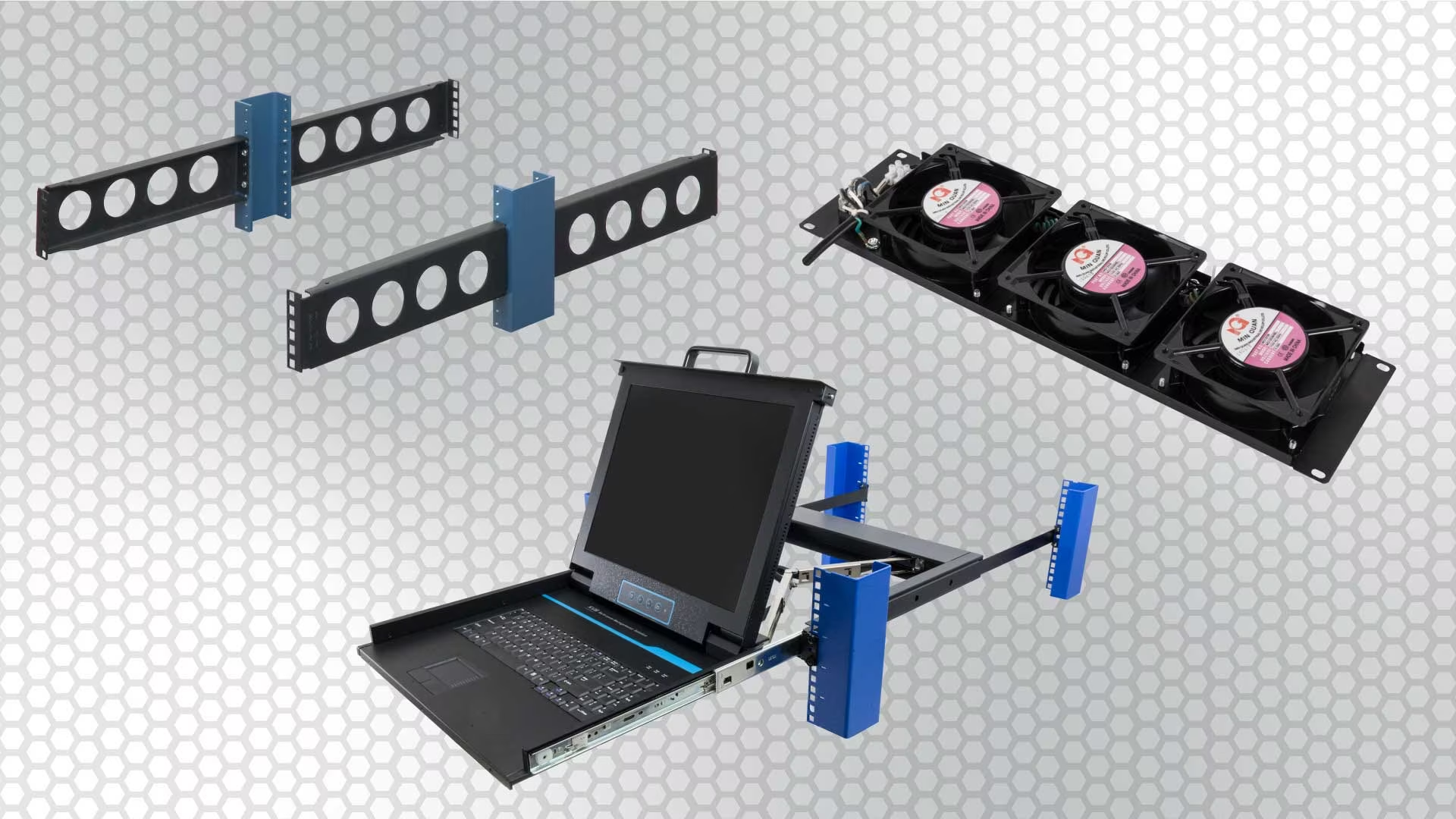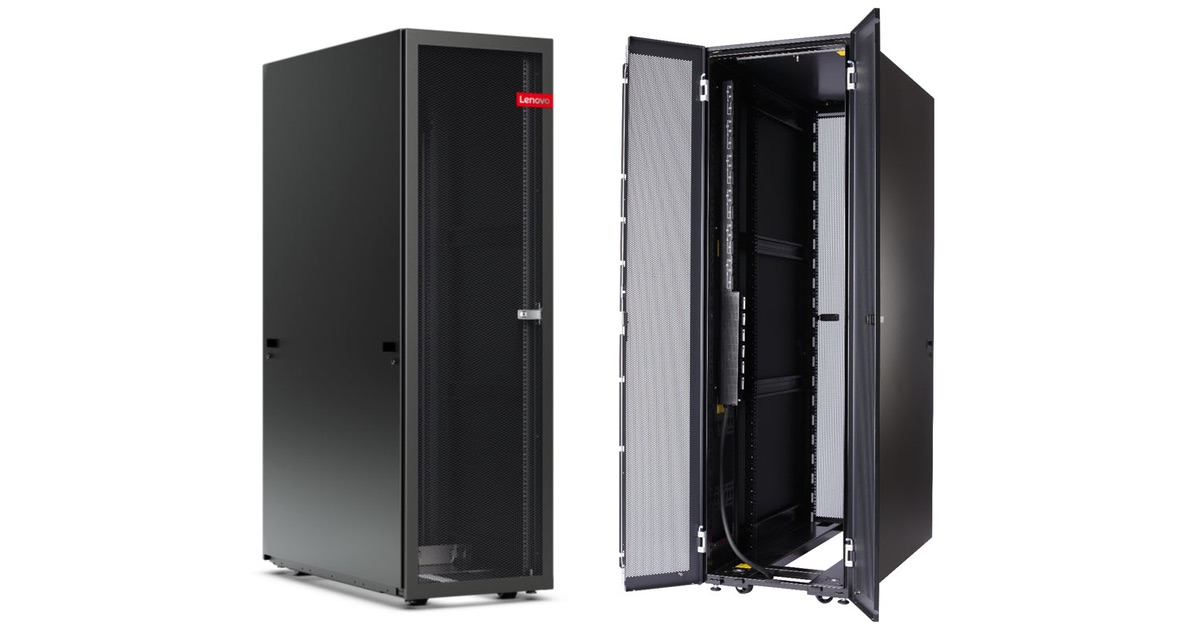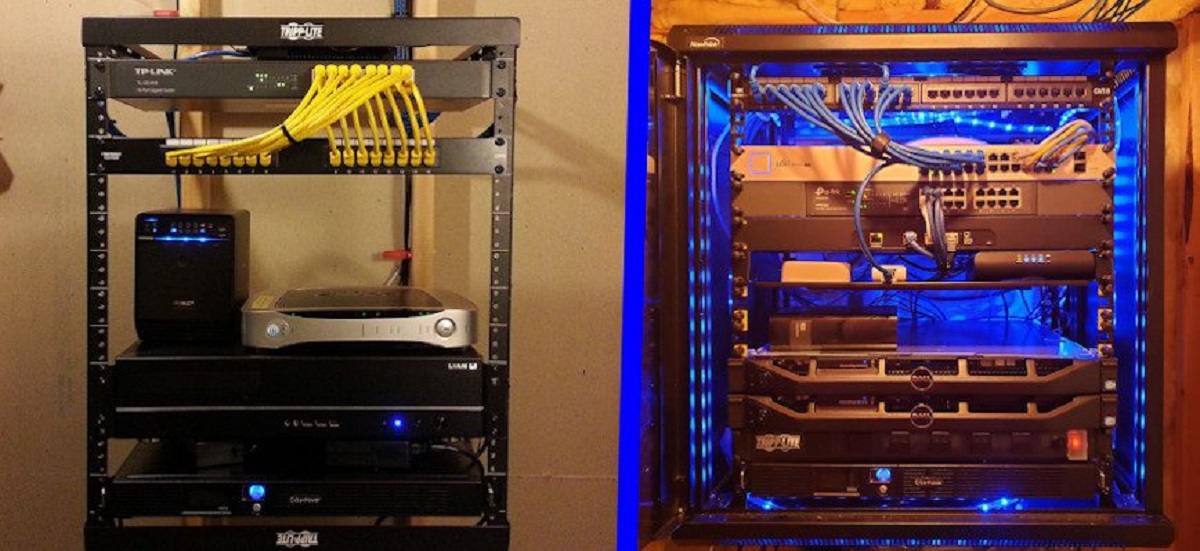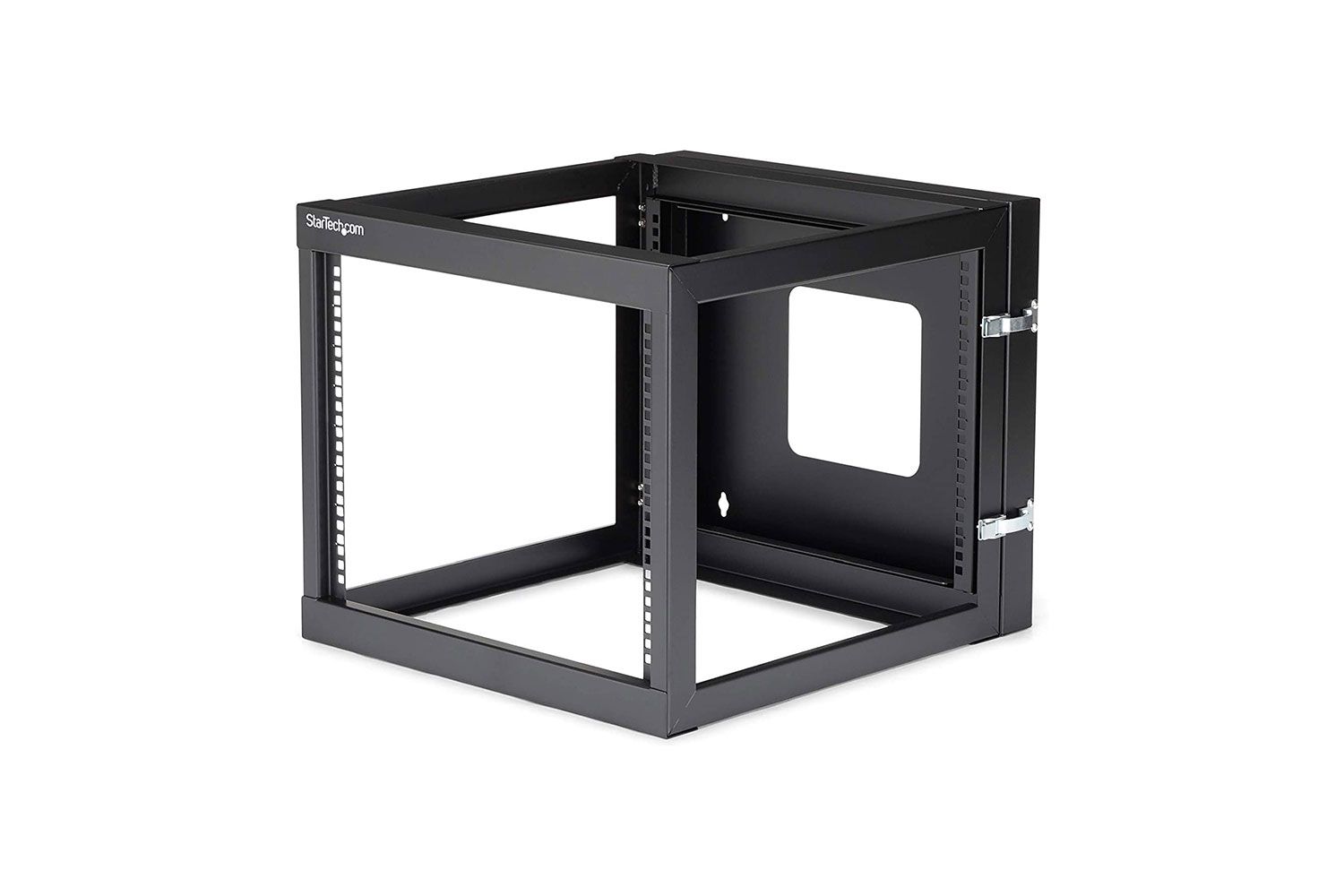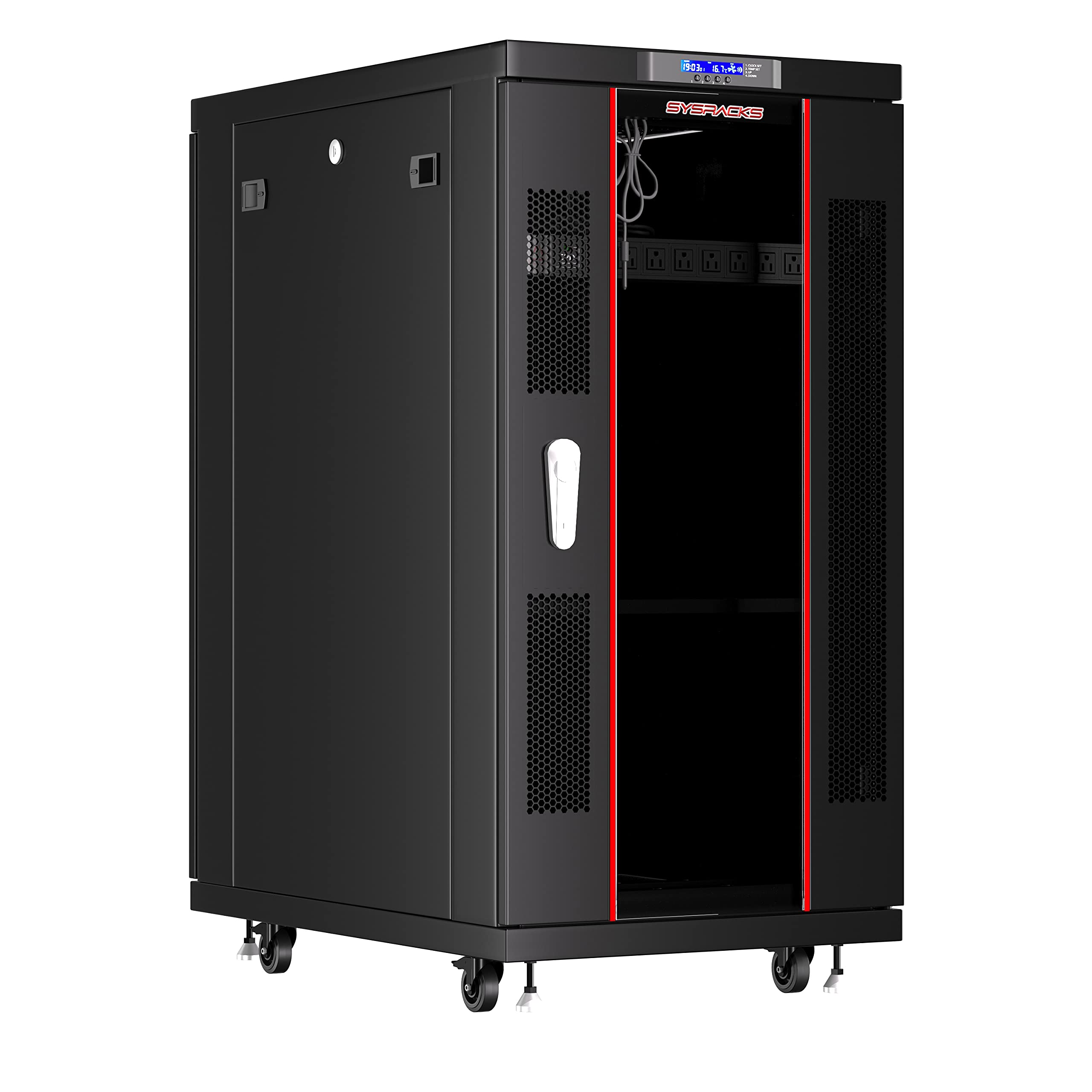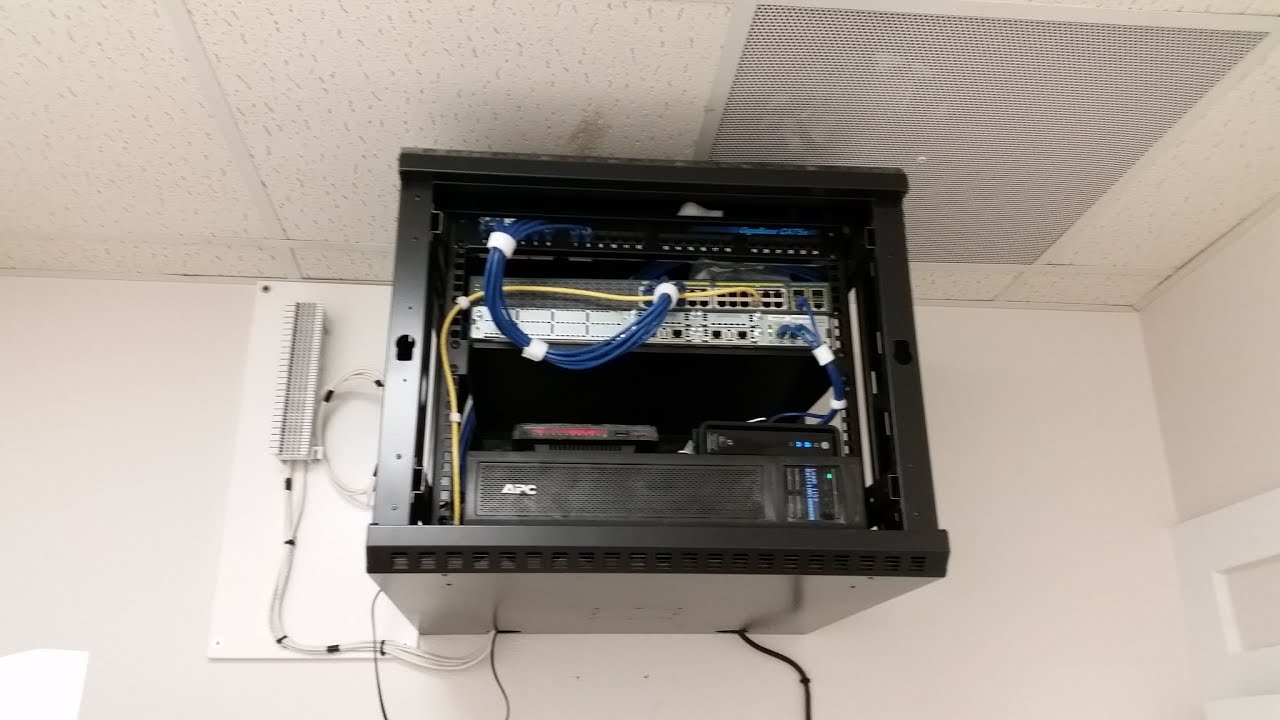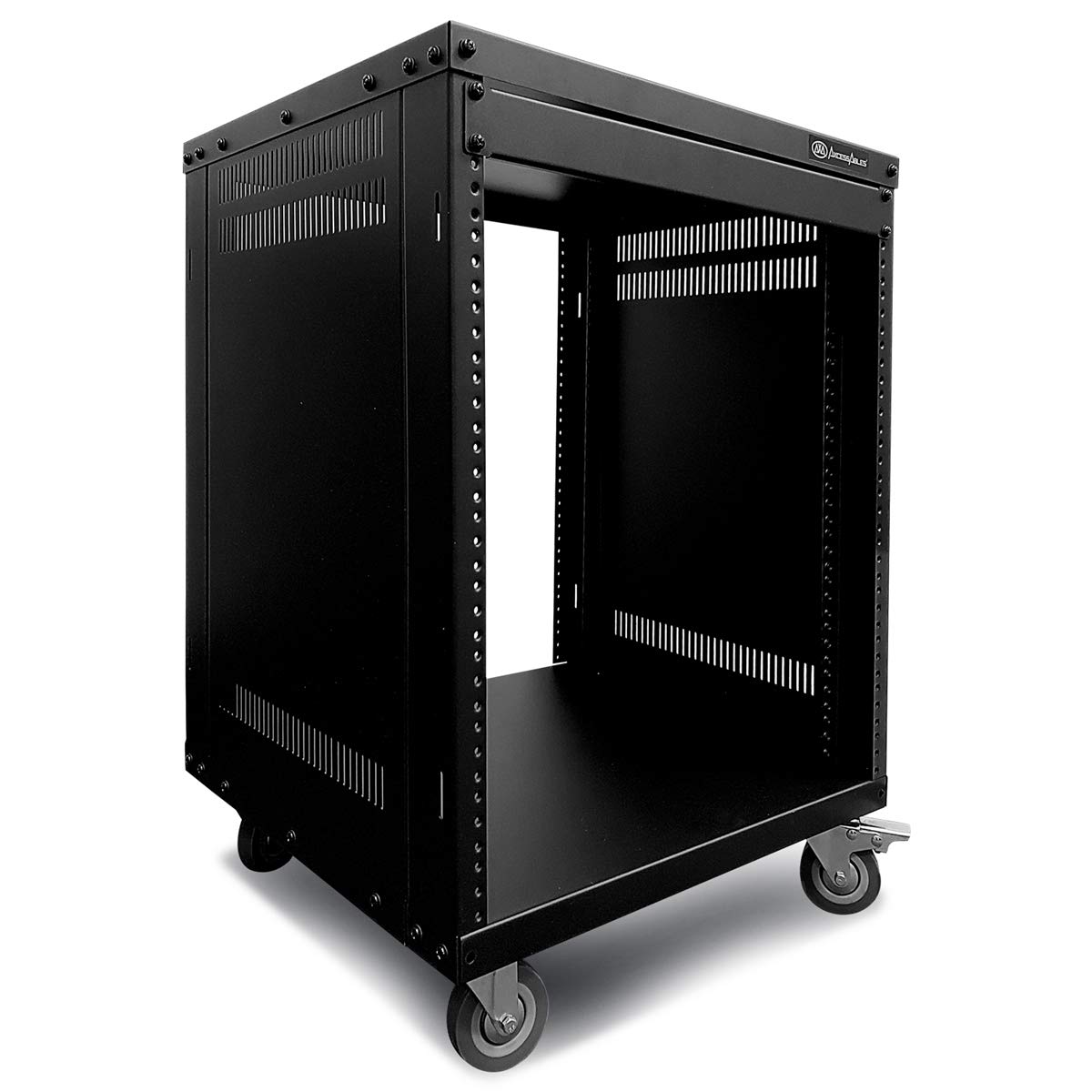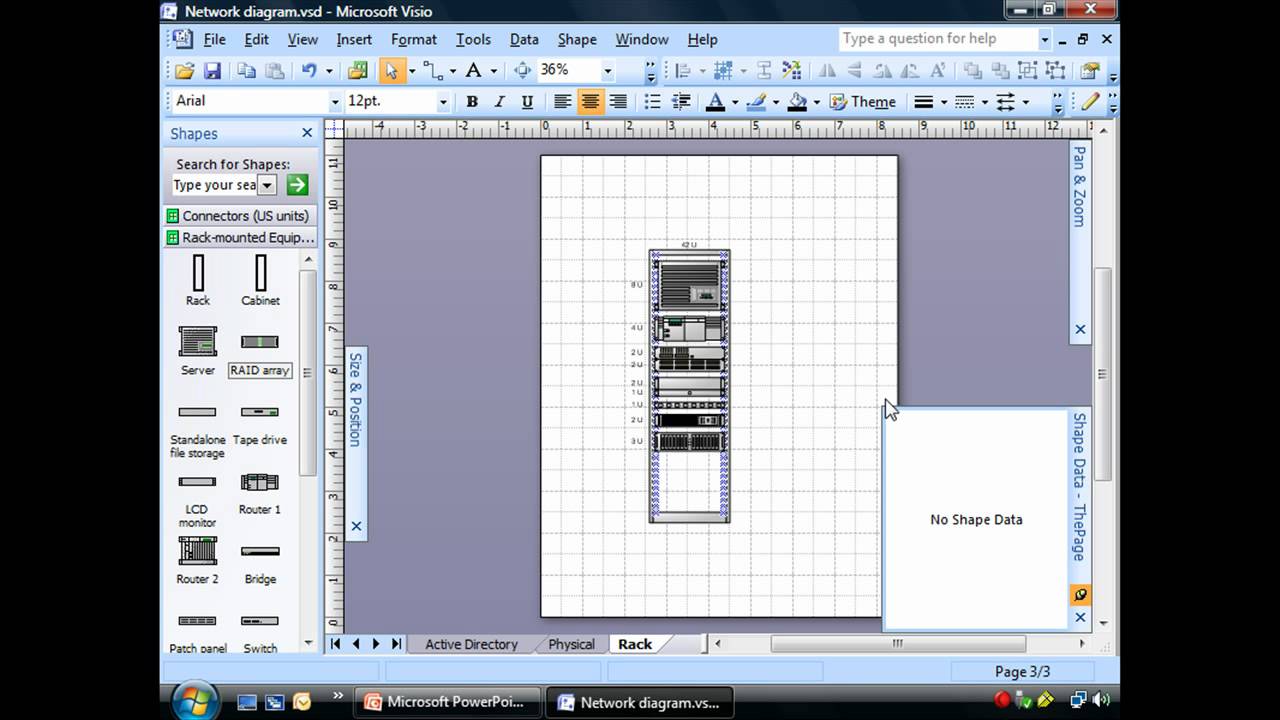Introduction
Welcome to the world of home server racks! If you’re a tech enthusiast or someone who enjoys tinkering with computers and network setups, having a dedicated space to house your equipment can be a game-changer. A home server rack not only keeps your devices organized but also ensures optimal performance, reliability, and scalability.
Whether you’re setting up a small home office or creating a fully-fledged home data center, a well-designed server rack is essential. It provides a centralized location for your network equipment, server hardware, storage devices, and more.
In this article, we will explore the fundamental components that you should consider including in your home server rack. From network equipment to cooling solutions, we’ll delve into each aspect and provide valuable insights to help you make informed decisions.
Creating a home server rack is like building a puzzle. Each piece plays a significant role in the overall functionality and efficiency of your setup. By carefully selecting and integrating the right components, you can create a robust and reliable infrastructure that meets your specific needs.
Before diving into the details, it’s important to note that the specific requirements of your home server rack will depend on various factors such as the size of your network, the number of users, the types of applications you run, and the level of redundancy and security you require. However, we will cover the essentials that apply to most home server setups.
So, whether you’re a beginner looking to set up your first home server rack or a seasoned pro looking to optimize your current setup, let’s explore the key components you should consider.
Network Equipment
A reliable and efficient network setup is a crucial component of any home server rack. It ensures seamless communication between devices and enables smooth data transfer. Here are some key network equipment components to consider:
- Router: A high-quality router is the foundation of your network. It manages inbound and outbound network traffic and provides a secure gateway to the internet. Look for a router that offers advanced features such as dual-band support, gigabit Ethernet ports, and strong security protocols.
- Switch: A switch expands the number of available Ethernet ports, allowing you to connect multiple devices to your network. Consider a managed switch if you need more control over network traffic, VLANs, and quality of service (QoS).
- Access Point: An access point extends your Wi-Fi coverage, eliminating dead zones in your home. Look for an access point that supports the latest Wi-Fi standards, such as 802.11ac or 802.11ax, for faster and more reliable wireless connections.
- Modem: If you have a broadband internet connection, you’ll need a modem to connect to your internet service provider (ISP). Choose a modem that is compatible with your ISP’s requirements and offers fast download and upload speeds.
When selecting network equipment, it’s essential to consider the size of your network and the number of devices you plan to connect. Additionally, ensure that the equipment is compatible with each other and can handle the bandwidth requirements of your network activities, such as streaming, gaming, or file sharing.
Implementing network equipment that meets your needs will provide a stable and secure foundation for your home server rack. It allows for efficient communication between your devices, enhances data transfer speeds, and ensures a smooth browsing experience for all users.
Server Hardware
The server hardware you choose for your home server rack is crucial in determining the performance and capabilities of your setup. Whether you’re running a web server, a media server, or a virtualization platform, selecting the right server hardware is essential. Here are some key components to consider:
- Server Chassis: The server chassis houses all the server components and provides physical protection. Choose a chassis that offers ample space for expansion, good airflow for cooling, and easy access to internal components for maintenance.
- Motherboard: The motherboard is the main circuit board that connects all the server components. Look for a motherboard that supports the appropriate processor socket, has sufficient RAM slots, and offers expansion capabilities for future upgrades.
- Processor (CPU): The CPU determines the processing power of your server. Consider factors such as the number of cores, clock speed, and cache size when selecting a CPU. Opt for a processor that can handle your workload requirements efficiently.
- Memory (RAM): Sufficient RAM is crucial for handling multiple tasks and running applications smoothly. Choose RAM modules with good capacity and speed to accommodate your server’s memory needs.
- Storage Drives: Depending on your requirements, consider a combination of solid-state drives (SSDs) for fast and responsive performance and traditional hard disk drives (HDDs) for cost-effective storage capacity. RAID configurations can provide enhanced data protection and performance.
In addition to the hardware components mentioned above, consider other features such as expansion slots, integrated graphics, and network interfaces when selecting server hardware. It’s also important to consider power efficiency to minimize energy consumption.
Furthermore, think about future scalability and upgrade options when choosing server hardware. Plan for potential growth and ensure that your hardware choices can accommodate new technologies and increased demands.
Investing in high-quality server hardware will ensure the stability, reliability, and performance of your home server rack. It will enable you to handle intensive workloads more efficiently and provide a solid foundation for your server-related tasks.
Storage Devices
Storage devices are a crucial component of your home server rack, as they provide the means to store and retrieve data efficiently. Depending on your needs, you may require various types of storage devices. Here are some options to consider:
- Network-Attached Storage (NAS): NAS devices are dedicated file storage systems connected to your network. They offer centralized storage accessible to multiple devices simultaneously. NAS devices often come with RAID support for data redundancy and allow for easy data management, backups, and remote access.
- Storage Area Network (SAN): SAN is a specialized network that provides high-speed access to block-level data storage. It offers scalable and flexible storage solutions for enterprise-level applications. SAN setups typically utilize Fibre Channel or iSCSI protocols.
- Internal Hard Drives: Internal drives, such as SSDs or HDDs, can be installed directly into your server. SSDs provide faster access speeds and are ideal for running applications requiring quick read/write access. HDDs offer greater storage capacity at a lower cost, making them suitable for archival purposes.
- External Hard Drives: External drives offer an easy and portable way to expand your storage capacity. They can be connected directly to your server for backup purposes or used to transfer data between systems.
- Cloud Storage: Cloud storage solutions, such as Amazon S3, Google Cloud Storage, or Microsoft Azure, provide off-site storage accessible through the internet. They offer scalability, data redundancy, and accessibility from anywhere, making them an attractive option for remote backup and file sharing.
When selecting storage devices, consider factors such as data capacity, speed, reliability, and budget. Assess your storage needs, including the amount of data you plan to store, anticipated growth, and the importance of data redundancy and backup.
Depending on your requirements, you may opt for a combination of storage devices. For example, you can use an NAS for centralized file storage, SSDs for faster application performance, and cloud storage for off-site backup.
Storage devices are crucial to ensuring data integrity and availability in your home server rack. By choosing the right storage solutions, you can create a reliable and efficient system that meets your storage needs now and in the future.
Power Management
Proper power management is essential for the smooth and reliable operation of your home server rack. Power-related issues can lead to system crashes, data corruption, and hardware damage. Here are some key components and considerations for effective power management:
- Uninterruptible Power Supply (UPS): A UPS provides backup power in the event of a power outage. It not only prevents data loss and hardware damage but also allows for a graceful shutdown during extended power outages. Look for a UPS that offers sufficient power capacity to support your server rack’s load and provides surge protection.
- Power Distribution Unit (PDU): A PDU acts as a central power distribution point for your server rack. It provides multiple power outlets and helps manage power distribution and load balancing. Consider a PDU with remote management capabilities to monitor and control power consumption.
- Power Monitoring Software: Install power monitoring software to track and analyze power consumption in your home server rack. This allows you to identify power-hungry devices, optimize energy usage, and plan for future power requirements. Monitoring power usage can also help identify potential issues with hardware or cooling.
- Cable Management: Proper cable management not only ensures a neat and organized appearance but also helps prevent power-related issues. Use cable management solutions such as cable trays, zip ties, and cable labels to keep power cables organized and minimize the risk of accidental disconnections or tripping hazards.
When setting up your power management system, consider factors such as the power requirements of your server hardware, the number of devices you need to connect, and any future expansion plans. Ensure that your power management components are compliant with safety standards and properly grounded to avoid electrical hazards.
Effective power management in your home server rack will help ensure the continuous operation and protection of your equipment. It helps prevent unexpected downtime and data loss, safeguards against power fluctuations, and provides the necessary backup power during emergencies.
Cooling Solutions
Proper cooling is essential to maintain optimal performance and prevent overheating in your home server rack. As your equipment generates heat during operation, it’s important to implement effective cooling solutions to dissipate heat and maintain a stable temperature. Here are some key considerations for cooling your server rack:
- Rack Fans: Install rack-mounted fans to ensure adequate airflow within the server rack. These fans help move the hot air generated by the equipment out of the rack, preventing hot spots and promoting overall cooling.
- Cabinet Ventilation: Choose a server rack cabinet with proper ventilation design, such as perforated doors and panels. This allows for better air circulation and heat dissipation. Additionally, consider using blanking panels to cover unused rack spaces, preventing air recirculation and improving cooling efficiency.
- Rack Air Conditioning: In environments with high ambient temperatures, consider installing a rack air conditioning unit. This helps maintain a controlled temperature within the server rack, preventing equipment overheating and potential performance issues.
- Cable Management: Proper cable management not only improves organization but also helps with airflow. Neatly route and label cables to prevent blocking of intake or exhaust vents. Minimize cable clutter and ensure that cables do not impede the natural flow of air within the rack.
Monitoring the temperature inside your server rack is crucial to ensure efficient cooling. Use temperature sensors and monitoring software to keep track of temperature levels and receive alerts in case of any abnormal increases. Regularly clean and inspect fans, vents, and filters to maintain optimal airflow and prevent dust accumulation.
When planning your cooling solutions, consider the heat output of your server hardware, the size of your server rack, ambient temperature conditions, and any potential future expansions. By implementing effective cooling solutions, you can extend the lifespan of your equipment, improve overall performance, and minimize the risk of hardware failures due to overheating.
Cable Management
Proper cable management is crucial for maintaining an organized and efficient home server rack. Neat and well-organized cables not only improve the aesthetics of your setup but also provide several practical benefits, such as easy maintenance, improved airflow, and reduced risk of accidental disconnections. Here are some key considerations for effective cable management:
- Labeling: Labeling cables helps identify them quickly and reduces confusion when performing maintenance or troubleshooting. Use color-coded labels or tags to distinguish between different types of cables, such as power cables, Ethernet cables, or HDMI cables.
- Organizing: Use cable management solutions, such as Velcro straps, zip ties, or cable sleeves, to bundle cables together and keep them organized. This not only prevents tangled cables but also makes it easier to trace connections and remove or add cables when needed.
- Routing: Plan the routing of cables to minimize clutter and interference with airflow. Use cable management channels or cable trays to route cables along designated paths, separating power and data cables to minimize electromagnetic interference.
- Service Loops: Create service loops, extra slack in the cables, to allow for easy maintenance or equipment relocation without the need to disconnect and reconnect cables. Service loops prevent strain on cables and connectors, reducing the risk of damage or signal loss.
Additionally, consider the future scalability of your setup when managing cables. Leave extra space for future expansion and ensure that cables are easily accessible in case of modifications or upgrades.
Effective cable management not only improves the overall appearance of your server rack but also offers practical benefits. Neatly organized and labeled cables make it easier to trace connections, troubleshoot connectivity issues, and perform maintenance tasks efficiently.
Regularly inspect and maintain your cable management system to ensure cables are secure, properly labeled, and not interfering with cooling or other equipment. By implementing proper cable management techniques, you can create a clean and professional-looking home server rack while maintaining the functionality and accessibility of your setup.
Security and Access Control
Ensuring the security of your home server rack is essential to protect your data, equipment, and network from unauthorized access or malicious activities. Implementing robust security measures and access controls can help safeguard your server rack. Here are some key considerations for enhancing security:
- Physical Security: Secure your server rack in a locked room or cabinet to limit physical access. Use sturdy racks or cabinets with tamper-proof locks to prevent unauthorized entry. Additionally, consider installing security cameras or an alarm system to monitor and deter potential intruders.
- Authentication and Authorization: Implement strong authentication methods for accessing your server rack. Use unique usernames and complex passwords for each user account. Consider using two-factor authentication (2FA) to add an extra layer of security. Restrict access to only authorized personnel who require it.
- Firewall and Intrusion Detection Systems (IDS): Install a firewall to filter and control network traffic. This helps protect your server rack from unauthorized access attempts and potential attacks. Additionally, consider implementing an IDS to detect and alert you to any suspicious activity or intrusion attempts.
- Network Segmentation: Segment your network to separate critical systems from public-facing ones. This helps contain potential security breaches and limits the impact of a compromised system. Use VLANs or separate subnets to isolate different types of traffic and implement access control lists (ACLs) to restrict communication between segments.
- Regular Updates and Patches: Keep your server operating systems, applications, and firmware up to date by regularly applying security patches and updates. Vulnerabilities in outdated software can be exploited by attackers to gain unauthorized access. Enable automatic updates whenever possible for better security maintenance.
In addition to these measures, it is important to regularly review and update your security practices. Conduct risk assessments, perform vulnerability scans, and regularly audit access logs to identify and address any security loopholes or suspicious activities.
Remember, security is an ongoing process, and staying informed about the latest threats and security best practices is crucial for maintaining the integrity and confidentiality of your home server rack.
Monitoring and Management Tools
Monitoring and managing your home server rack is crucial for ensuring its efficient operation, identifying any issues or bottlenecks, and maintaining overall system health. Utilizing monitoring and management tools can greatly simplify these tasks. Here are some key tools and practices to consider:
- Server Monitoring Software: Install server monitoring software to keep track of the performance, health, and availability of your servers. These tools provide real-time monitoring of CPU usage, memory usage, network traffic, and disk space. They also generate alerts for threshold breaches, enabling you to address issues promptly.
- Network Monitoring: Use network monitoring tools to monitor and troubleshoot network infrastructure components such as routers, switches, and access points. These tools provide insights into network performance, bandwidth utilization, and connectivity issues. They can also provide visual representations of your network topology.
- Remote Management Tools: Implement remote management tools for easy and secure access to your server rack from anywhere. Remote management tools enable you to perform administrative tasks, access the console, and troubleshoot issues without being physically present.
- Configuration Management: Utilize configuration management tools to automate the provisioning and deployment of server configurations. These tools help enforce consistency, track changes, and roll back configurations if necessary. Configuration management tools also aid in disaster recovery by providing ways to replicate and restore configurations.
- Documentation and Ticketing Systems: Maintain thorough documentation of your server rack, including network diagrams, hardware inventory, and system configurations. Additionally, incorporate a ticketing system to track and manage issues, changes, and maintenance tasks. This helps in maintaining records, collaboration, and ensuring accountability.
Regularly review and analyze the data collected by your monitoring and management tools. Identify trends, pinpoint bottlenecks, and perform capacity planning to make informed decisions about resource allocation and infrastructure upgrades. Regularly evaluate the effectiveness of your monitoring and management tools to ensure they continue to meet your evolving needs.
Ultimately, utilizing monitoring and management tools provides you with the necessary insights and control to effectively manage your home server rack, optimize performance, and ensure the reliability of your infrastructure.
Backup and Disaster Recovery Solutions
Implementing robust backup and disaster recovery solutions is crucial for protecting your data and minimizing downtime in the event of a hardware failure, natural disaster, or any other unexpected event. Here are key considerations for creating effective backup and disaster recovery strategies for your home server rack:
- Data Backup: Regularly back up your critical data to a separate storage device or off-site location. Consider using a combination of on-site backups and cloud-based services for added redundancy. Automate the backup process to ensure consistency and minimize the risk of human error.
- Backup Testing: Periodically test the integrity and recoverability of your backups. Perform test restores to confirm that your data can be successfully restored in case of a failure. Regularly review and update your backup procedures based on the results of these tests.
- Disaster Recovery Plan: Develop a comprehensive disaster recovery plan that outlines the steps to be taken in the event of a catastrophic event. Identify critical systems and prioritize their recovery. Include procedures for notifying relevant personnel, ensuring communication channels are available, and having access to necessary resources.
- Redundancy and High Availability: Implement redundancy and high availability measures to minimize downtime. This includes utilizing RAID configurations for your storage devices, deploying server clusters, and leveraging virtualization technologies to quickly migrate services to alternate environments in case of failure.
- Off-site Backup: To protect against site-wide disasters, consider storing backups in geographically distant locations. This protects your data in case of localized events such as fires, floods, or theft. Cloud storage providers offer secure and scalable off-site backup solutions for added data protection.
Regularly review and update your backup and disaster recovery strategies as your server rack and data storage requirements change. Consider the criticality of your data, recovery time objectives (RTOs), and recovery point objectives (RPOs) when designing an optimal backup and disaster recovery solution for your needs.
Testing and periodically reviewing your backup and disaster recovery plans will ensure that your home server rack is prepared to handle unforeseen events and that your data remains safe and accessible. Investing the time and effort into implementing these solutions can save you significant headaches and minimize potential losses in the future.
Conclusion
Building a well-designed and efficient home server rack is a complex task that requires careful consideration of various components and factors. By incorporating the right network equipment, server hardware, storage devices, power management solutions, cooling systems, cable management techniques, security measures, and monitoring tools, you can create a robust and reliable infrastructure.
From the network equipment, such as routers and switches, to the server hardware components like processors, memory, and storage devices, each piece plays a vital role in the overall functionality and performance of your home server rack. Proper power management, cooling solutions, cable management, security measures, and monitoring and management tools are crucial for maintaining optimal operation and safeguarding your data and equipment.
Remember to design your home server rack with scalability and future expansion in mind. Plan for potential growth and ensure that your chosen components and configurations can easily accommodate the increasing demands of your network and applications.
Lastly, regularly review and update your setup to keep up with evolving technologies and security requirements. Stay informed about the latest trends and best practices in server rack management to ensure your infrastructure remains reliable, secure, and efficient.
With careful planning, thoughtful selection of components, and diligent maintenance, your home server rack can provide a powerful and reliable platform for hosting websites, running applications, storing and backing up data, and much more. Enjoy the countless possibilities that a well-designed and functional home server rack can bring to your technological endeavors.







